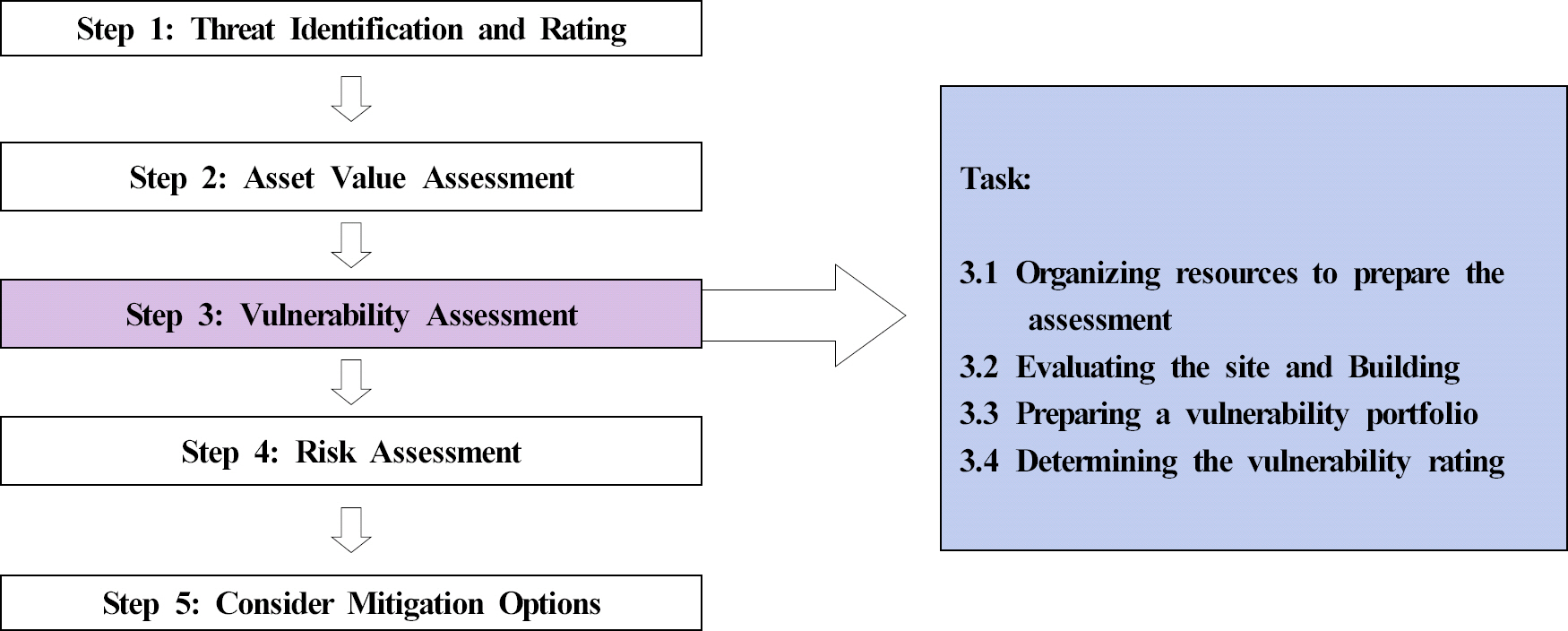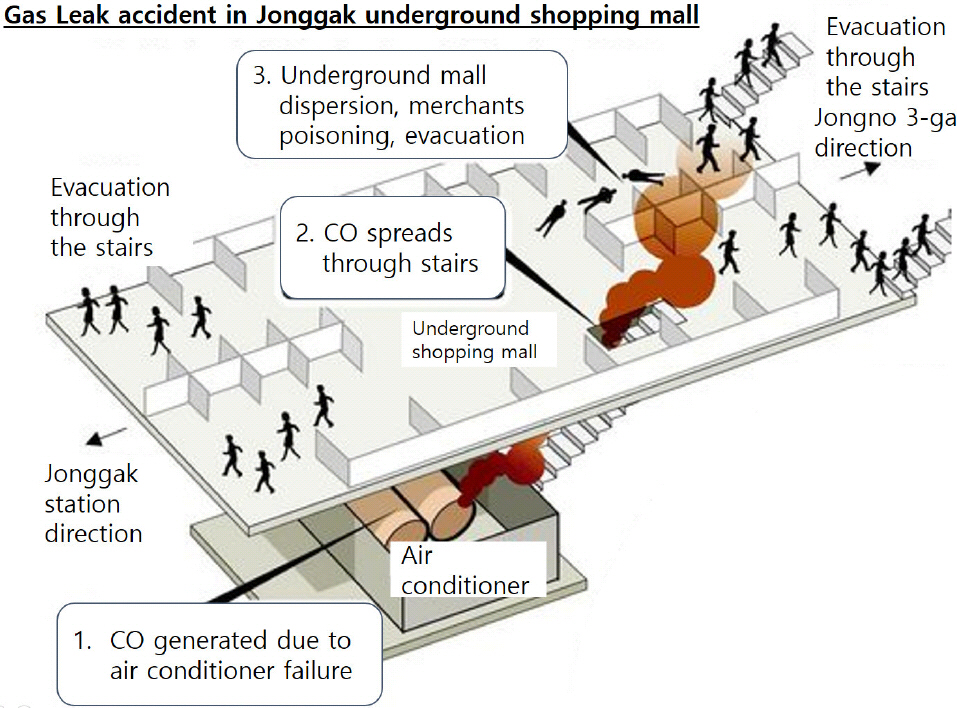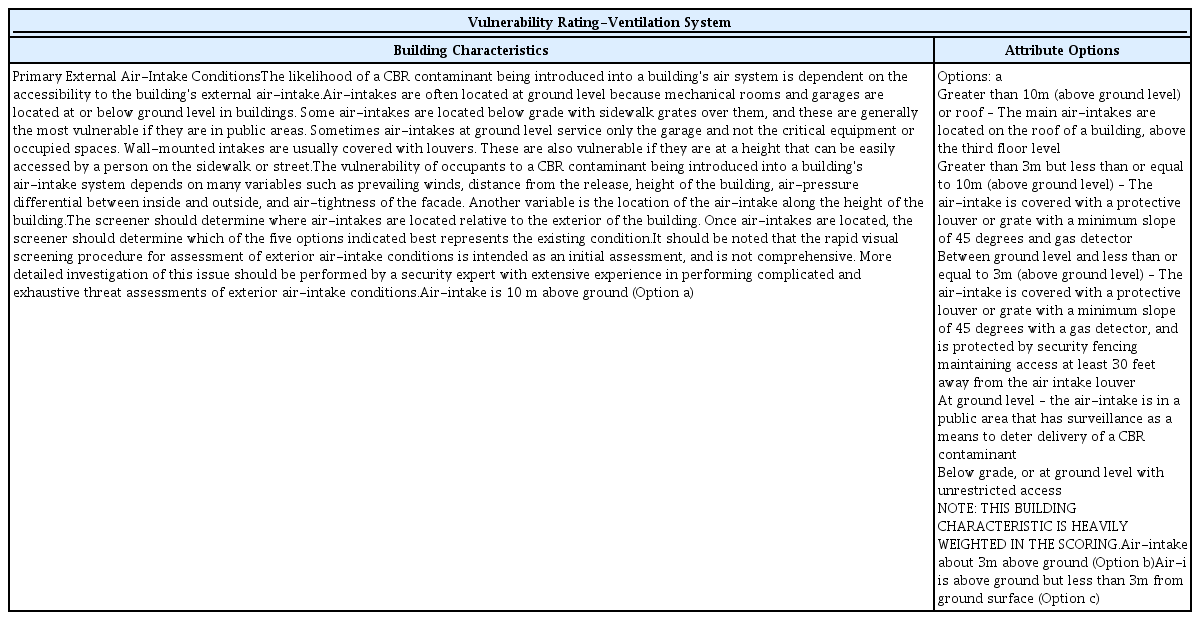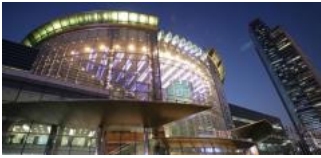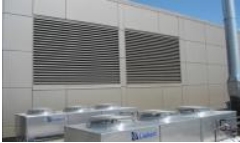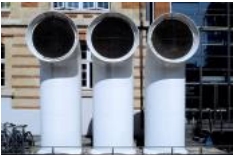다중이용시설 화학테러 취약등급설정 방법론 개선에 대한 연구
A Study on the Improvement of Methodologies for Establishing a Vulnerability Classification of Chemical Terrorism in Public Facilities
Article information
Abstract
요 약
인체 건강에 치명적인 위해를 가할 수 있는 독성 및 인화성 가스를 이용한 화학테러행위는 행위자인 테러범과 그 행위로 인한 피해자 간에 존재하는 현격한 정보의 비대칭성으로 인해 대다수의 선진국, 또는 국지적 분쟁을 겪고 있는 국가 및 지역사회에 대하여 중대한 안보위협이 되고 있다. 화학테러에 대한 대응기관의 대처방안은 크게 예방, 대응, 수습의 3단계로 나누어 볼 수 있고, 이 과정 중에서 화학테러의 피해 정도 및 피해 범위에 절대적인 영향력을 미치는 예방과 대응단계에 해당하는 각 전문대응기관과 요원들의 성공적인 임무수행을 위해서는 화학테러의 잠재적 대상이 되는 시설들에 대한 객관적이고 체계화된 취약성의 평가와 등급화가 무엇보다 중요하다. 본 연구에서는 기존 국내외의 화학테러관련 취약성 등급분류체계를 비교분석하고 현재 국내 등급분류체계의 개선방향에 대해 살펴보고 실제 국내 다중이용시설 표본에 대한 취약성 평가를 통해서 보다 과학적이고 체계화된 방법론을 제시하였다.
Trans Abstract
ABSTRACT
Chemical terrorism using toxic and flammable gases, which could be fatal to the health of the human body, poses a serious threat to the security of most advanced countries, as well as those that are suffering from local disputes, due to the asymmetric information that exists between terrorist actors and victims. The countermeasures against chemical terrorism can be roughly divided into three stages: prevention, response, and probation. The critical factors for each professional response agency, and the personnel that determine the degree and range of chemical terrorism damage, are performing missions successfully in the process of the prevention and the response stage against chemical terrorism. To do this, conducting objective and systematical assessments on facilities that could potentially be the subject of chemical terrorism is more important than anything. In this study, we compared the existing domestic and foreign vulnerable classification systems for chemical terrorism, reviewed the current direction of improvement in domestic classification systems, and suggested more scientific and systematic methodologies through the vulnerability assessment on an actual public facility sample.
1. 서 론
불특정 다수의 민간인을 대상으로 하는 소위, 소프트타깃 대상 테러행위는 테러의 동기유형만큼이나 복잡하고 다양한 패턴을 보이고 있다[1]. 이들에 대한 여러 테러행위의 유형 중에서도 테러행위자와 가해자간의 정보 비대칭성 및 테러이용물질의 접근용이성[2], 정치사회적인 파급효과를 고려했을 때 독성 및 인화성 가스물질을 이용한 화학테러는 대다수의 선진국은 물론이거니와 정치 혹은 종교분쟁을 겪고 있는 다수의 국가와 지역사회에서 이미 그들의 체제안보에 중대위협이 되고 있다.
미국과 EU를 중심으로 화학사고 및 테러대응체계에 대한 지속적인 연구와 발전이 있어왔는데, 이들 선진국들에 비해 국내 대응체계는 관련분야의 연구 및 그 연구로부터 수집된 현장 데이터의 부족으로 인해, 화학테러 대응기관 및 소속요원들의 보다 효과적인 현장 임무수행을 위해서는 지금부터라도 관련분야의 연구와 기술개발에 대한 체계적인 투자가 필요하다. 현재 경찰, 소방, 중앙행정부, 지자체 등이 담당하고 있는 화학테러대응체계는 기관별로 세부업무수행의 차이는 있으나 큰 틀에서는 사고예방, 사고대응, 사고수습의 3단계로 구성되는 공통점이 있다. 화학테러 대응단계 중에서 화학테러의 피해정도 및 피해범위에 가장 큰 영향력을 미치는 단계는 예방과 대응이다. 이들 단계에 해당하는 각 대응기관 및 요원들의 성공적인 임무수행을 위해서는 화학테러의 잠재적 대상이 되는 시설들에 대한 객관적이고 체계화된 취약성의 평가 및 등급화가 무엇보다 중요하다. 여기에서 말하는 “취약성”은 “어떤 시스템이 방호장치가 갖춰진 상태에서 갖는 시스템 고유의 약점 내지는 방호장치로 인해 생기는 부가적인 약점[3]”으로 정의하기로 한다.
본 연구에서는 현존하는 국내와 해외의 화학테러관련 취약성 등급분류체계를 비교분석하고 현재 국내 등급분류체계의 개선방향에 대해 살펴보고 등급분류를 위한 보다 과학적이고 체계화된 방법론을 제시하고자 하였다.
2. 본 론
2.1 문헌검토
현재 국내에서 화학테러에 대비에 특화된 취약성 평가 방법 및 취약성 등급분류체계는 존재하지 않는다. 다만, “경찰청 훈령 제748호”에서 규정한 “테러취약시설 안전 활동에 관한 규칙[4]”에서는 다중이용시설의 정의 및 테러취약시설의 지정요건[5]에 대한 기준을 제시하고 있으며 그 내용은 Table 1과 같다.

The Regulations on Safe Activities in Facilities Vulnerable to Terrorism (Korean National Police Agency)
상기 표에서 보듯이, 국내법에서 규정하고 있는 테러취약시설의 분류군 중 하나인 다중이용시설을 불특정다수가 이용하는 생활편의공간시설로 정의하고 있다. 또한 그 다중이용시설의 취약성등급의 설정기준을 정함에 있어 테러 발생 시 대응조치의 요구되는 수준 및 해당시설의 테러로 인한 피해가 일반인 생활에 미칠 영향을 기준으로 정성적이고 사고수습에 초점을 맞춘 분류법을 취하고 있다. 하지만, 일반사고와 비교해 사전예방대책이 더욱 강조되는 시설에 대한 취약등급기준이라는 관점에서 기존의 체계가 갖는 취약성 평가체계로써의 한계는 개선이 필요한 부분이다. 특히 사건발생 시 미확인 화학물질로 인해 생기는 정보비대칭성으로부터 피해의 통제가 더욱 어려운 화학테러의 경우에는 다른 어떤 유형의 테러보다 더욱 예방을 위한 사전 취약성평가에 따른 위험성 최소화대책의 시행만이 근본적인 해결책이라고 할 수 있다. 국외의 경우 테러취약성평가에 있어 국내와 비교해 상대적으로 체계적인 평가방법을 제시하고 있는데 방법론 측면에서 비교해 보고자 한다. 다음의 Table 2는 미국 연방재난관리청에서 제공하고 있는 “건물에 대한 잠재적 테러공격 피해 완화 가이드[6]”에 따른 평가대상 건물의 테러취약성 평가를 위한 전 단계인 “위험 식별”단계에서 수행되는 필수평가 항목들과 동일 평가항목 내에서 등급서열을 제공한다. 해당 자료에 따르면, 잠재적 테러공격가능성의 정도를 판단하기 위해 테러에 사용될 물질 혹은 매개체에 대한 접근성 및 전문지식부터 공격대상 건물과 연계된 시설로의 피해파급력 및 이격 거리 등을 종합적으로 반영하게 되는데 이는 잠재적 테러가해자의 테러시도 유형을 결정하는데 필요한 고려요소들을 체계적으로 반영한 것으로 볼 수 있다.
미국 연방재난관리청은 잠재적 테러위험 완화대책을 수립하기 위해 일련의 프로세스를 제시하고 있는데 취약성 평가를 기존방호조치를 감안한 상태에서 여전히 존재하는 내재적 약점의 평가라는 관점으로 접근하고 있다. Figure 1의 프로세스가 취약성 평가의 체계가 확립되지 않은 국내실정에 참고가 될 수 있는 있다고 생각한다. 본 프로세스에서 취약성 평가는 전체 5개의 세부절차 중 3번째에 위치하는데 취약성 평가의 목적은 건물 기능, 시스템 및 사이트 특성을 철저히 분석하여 분석대상 건물이나 시설의 약점과 중복성 부족을 식별하고 보완 방안을 정해서 취약성을 줄이기 위한 것[4]이라고 언급하고 있다. 여기에서 말하는 취약성이란 “침입자에 의해 어떤 자산이 위험피해에 노출되기 쉽도록 악용될 수 있는 해당 자산의 약점[3]”이라고 정의되어 있다. Figure 1에 따르면 취약성 평가의 세부절차는 평가수행 준비를 위한 재원의 조직화로부터 시작해 취약성 등급의 결정까지 총 4단계로 이루어지며 주목할 만 한 점은 현재 국내 테러취약시설 등급 결정 시 활용되고 있는 Table 1에서 제시한 규정과는 다르게 평가수행을 위한 평가방법과 더불어 “취약성 포트폴리오”라는 개념을 적용하고 있다는 점이고, 이는 관련 분야의 전문가들로 이루어진 심의위원회에 의해 실질적인 취약등급 조정과 결정이 이루어지는 국내 등급규정 체계와는 달리, 보다 체계적이고 표준화된 등급설정 방법론 설정에 대한 모델을 제시하고 있 다는 관점으로 활용도에 대하여 본론에서 살펴보았다.
2.2 취약성평가모델 설계 시 고려사항
취약성 평가 방법론 모델에 대한 본격적인 설계를 하기에 앞서 먼저 다중이용시설에서 발생할 수 있는 유해가스를 이용한 테러의 유형 및 실제 참조 사례를 살펴보는 것은 보다 실용적인 방법론 모델을 설계하는데 필수적인 과정이라 할 수 있다. Table 3[2]은 국내연구진의 다중이용시설 화학테러 발생양상 예측에 관한 것으로 테러시도 방법에 따른 유형 및 각 유형별 적용 예측 장소와 추가적인 발생에 영향을 끼치는 인자들로 정리되어 있다. 이러한 분류접근을 통해 보다 국내실정에 맞는 화학테러취약시설등급 설정을 위해 필수적으로 고려해야 하는 테러형태 및 장소의 유형분류기준의 기초로 활용할 수 있다.
본 연구에서는 Table 3에서 제시하고 있는 화학테러의 잠재적인 유형 중에서 건물의 공기조화시스템을 통한 유해가스 확산이 이루어지는 가상의 상황을 전제로 한 취약성 평가 방법론을 제시하고자 하였다. 공기조화시스템이 화학테러취약성 평가등급 설정 시 중요하게 최우선적으로 다루어져야 하는 이유는 시설의 유형, 위치 등 각 시설의 개별특성과는 무관하게 공통적으로 적용된다는 점과 시설의 규모가 커지고 수용인구 규모가 증가할수록 공기조화설비의 환기용량과 적용범위가 비례해 증가하므로 화학테러 발생 시 화학물질의 확산에 미치는 영향력도 비례해 증가하기 때문이다. 상기의 Table 3에서도 볼 수 있듯이 대형건물이나 지하철 역사 및 인접 시설물의 공기조화시스템을 이용한 화학테러 행위는 화학테러의 위험정도를 판단하는 화학물질 살포 당시의 대기 노출도, 지속성, 농도[8] 등 테러행위 시도자가 테러행위 효과를 극대화하기 위하여 통제 가능한, 사건 원점이 갖는 인구밀집도, 시설물의 차폐성 등 여러 조건을 만족시키는 환경이 제공되는지 여부가 중요하게 다루어진다.
국내에서 2006년에 발생하여 65명의 중독 부상자를 발생시킨 종각역 일산화탄소 가스누출에 의한 지하철역 연결 상가 이용객들의 중독사고는 단순 설비 이상으로 밝혀졌지만[9] 2019년 현재에도 대부분의 국내 지하철 역사들이 그 당시와 같거나 유사한 공조시스템을 유지하고 있다는 점, 그리고 사고 당시 원인물질인 일산화탄소가 테러범에 의한 유독물질로 대체되어 계획적인 범행시도가 이루어졌을 경우 그 잠재적 피해는 가늠하기조차 어려운 실정이다.
화학테러로 인한 피해와 관련해 가장 우려되는 점 중의 하나는 화학테러사건이 일단 발생한 시점 이후에 이루어지 는 사건의 대응과 수습에 있어 현재 수준의 기술력과 대응력에 한계가 있는 것으로 판단되기 때문이고, 테러로 인한 피해를 최소화하는데 골든 타임의 확보, 미확인 물질의 특정 등 현실적인 한계가 존재한다는 점이다. 이러한 관점에서 사건발생 전의 예방단계에서 잠재적 화학테러 대상시설에 대한 취약성 평가를 통해 시설의 수준을 등급화하고 그에 맞는 체계적인 보완책을 강구하는 것이 화학테러로 인한 피해를 최소화할 수 있는 가장 효과적인 방법이라고 할 수 있다. Figure 2와 3에는 2006년 종각역 일산화탄소 가스누출사고 당시의 동일 사고에 대한 초기현장 보도 자료와 정식사고원인조사 결과를 보여주고 있다. 제시된 자료에서 알 수 있듯이 초기 사고 경위에 대한 기술조사가 이루어지기 이전에 발표된 사고원인분석결과를 보면 해당 유해가스의 확산경로 및 누출원인에 대한 분석이 Figure 3의 자료와 비교 시 실제 상황과 상당한 차이가 있음을 알 수 있다. 화학테러의 경우 일반적인 화학 사고에 비해 더욱 신속하고 정확한 사고 원점인 “Hot Zone”에 대한 위치 및 범위 파악과 더불어 확산경로에 대한 예측이 피해 정도의 최소화를 결정짓는 핵심변수가 된다.
만약 Figure 2와 3에서 제시하고 있는 것과 같이, 사고원점으로부터 유추한 초기 확산 경로에 따른 대피 유도 및 요구조자 수색에 활용하게 되면, 실제 상황(Figure 3)의 노출경로에 놓은 요구조자의 골든타임 확보가 어려워짐은 자명한 사실이며, 대피 경로 및 패해 감소대책을 설정하는데 있어 매우 위험한 상황에 처할 확률이 높을 수밖에 없다고 판단할 수 있다. 이와 유사한 상황이 테러범에 의하여 재현될 경우를 상정하였을 때, 즉 질식작용제, 신경작용제 또는 무력화작용제와 같은 전형적인 대량살상 무기에 의한 것이라면 현시점의 대응 및 수습체계가 2006년 그 당시보다 훨씬 개선되었다고 볼 수 있는지 정확하게 판단하고 분석할 필요가 있다. 특히 예방단계에서 필수적으로 수행되어야 하는 표준화된 취약성 평가체계조차 마련되어 있지 않은 국내의 실정을 볼 때 지금부터라도 국내 실정을 반영한 화학테러 잠재적 대상시설에 대한 취약성 등급분류를 위한 국내 고유의 취약성 평가체계가 마련되어야 할 것이다.
2.3 취약성평가모델 설계
Figure 1의 취약성 평가모델을 기반으로 다중이용시설에 대한 화학테러 취약성평가모델을 제시하고자 한다. 전체적인 취약평가의 수행절차를 Figure 4와 같이 나타내었다.
다음의 Table 4에서는 상기에서 제시된 절차 중 첫 번째 단계인 취약성 평가 팀 조직 및 모듈결정 수행단계에서 이루어져야 하는 세부사항들을 나타내었다.
CBR 분야의 기술자를 비롯하여 건축물 내의 통신 등 각종 유틸리티 담당자가 화학물질의 확산, 지속성, 공조시스
템 등 기술분야의 제반 사항을 평가하여 시설 내의 노출 경로, 정도, 양상, 통제 가능성 등에 대하여 그 효과성을 판단해야 한다.
현장 취약성 평가가 실시되는 동안 각 단계별로 수행되어야 하는 세부업무를 Table 5에서 제시하고 있다. 각 단계별 제시된 참석자 및 평가대상과 그에 따른 결과물은 평가대상 시설물의 실제 여건에 따라 평가팀장 및 시설물 이해관계자의 협의 하에 조정될 수 있으며 이때 조정결과에 대한 사유 혹은 근거를 문서화 된 기록으로 남겨놓도록 한다. 취약성 평가에서는 반드시 시설관리책임자, 기술/보안/IT관리자, 조합, 비상대응행정기관, 지자체, 유틸리티 및 주요시설 관리자 등이 함께 참여하여 현장 미팅을 하는 것이 가장 중요한 사항인데, 이는 각 시설과 기기, 건축 구조에 대한 논의를 통하여 사건의 통제와 경로를 다양한 시각에서 파악할 수 있게 되며, 또한 통제 방식을 시나리오 사례별로 검증할 수 있기 때문이다.
취약성 평가를 하려는 대상시설의 현장여건에 따라 취약성 중점관리요소를 선정하여 이를 평가에 반영하도록 한다. Table 6는 취약성 중점관리요소 구성항목을 나타내는데 상기 구성항목들은 앞선 취약성 평가 구성항목과 마찬가지로 해당시설의 현장여건에 따라 구성상의 변동이 있을 수 있으며, 중요한 점은 취약성 평가 시 고려해야 하는 현장여건의 물적, 인적 변동사항과 같은 내재적 원인 이외에도 관 리규정 변동사항 혹은 정책과 같은 외부변동 요인 등도 반드시 중점관리 사항에 포함시켜야 하고 이를 위해 조직 내부에서 규정화된 업데이트가 지속적으로 이루어져야 한다는 점이다.
취약성 등급별 보완대책을 구성할 때는 시설유형에 따른 평가요소가 변환되어야 하고 Table 7의 예시와 같이 시설유형 및 시설이해관계자의 요구사항에 따라 보안대책은 상응하여 구성될 수 있다.
취약성 등급결정 평가테이블의 평가요소에는 앞서 실행한 현장 평가 및 중점관리요소 및 보완책 적용 이후에 최종적으로 심사 팀에 의해 결정된 중대위험의 수준 및 수량과 테러공격 이후 수습에 소요되는 시간 그리고 비상사태 하에서 가용한 시설물의 핵심기능시스템을 보조하는 백업시스템과 보호책의 수준이 포함된다. Table 8에서 제시하듯이 예를 들면, 중위의 위험요소는 5–6가지의 요소를 가지고 있으면서 복구에 대한 시간을 1주 이상 1개월 미만으로 설정하여 최근 화두로 떠오르는 회복탄력성, 즉 Resilience에 대한 고려까지 이루어지고 있으며, 비상상황에서 대응책에 대한 백업 요소를 정성화 하여 취약성을 평가할 수 있도록 한 것이다.
시설물의 화학테러 취약성평가과정 중 현장평가에서 즉각적인 활용이 가능한 가이드의 일부를 Table 9에서 제시하고 있다. 현재 미국 FEMA에서 제공하고 있는 ‘Handbook for Rapid Visual Screening of Buildings to Evaluate Terrorism Risks’를 참조하여 만든 Table 9은 화학테러관련 일상안전관리가 필요한 시설의 안전 및 보안 관리자는 물론 일선 소방, 경찰 및 기타 사법행정기관 실무관계자에게도 유익한 지침이 될 것으로 기대한다. 지침의 내용은 주로 테러범이 다중이용시설에 대한 가스 상의 화학물질을 이용한 테러시도 시, 접근성면에서 유리한 건물 외기흡입구에 대한 취약성 평가에 중점을 두고 현장평가를 진행하는데 참조가 되는 평가가이드를 제시하고 있다. 본 지침은 실무담당자가 평가를 실행하는 해당 시설물의 환기설비 배치 및 특성에 따라 평가옵션을 변형 및 응용하여 실무에 적용할 수 있다. Table 10에서는 미국 법무부에서 제시한 연방청사에 대한 테러대비 환기시스템 보안점검 체크리스트를 나타내었다. 체크리스트의 주요항목은 환기시스템의 위치, 흡입구 수, 접근권한 등으로 구성되어 있으며, 이러한 점검항목들은 앞서 언급한 다중이용시설에 대한 유해가스를 이용한 화학테러의 잠재적 공격개시점이 될 가능성이 높다는 점에서 취약성 현장평가 시 반영함은 물론이거니와 Figure 2와 3에서 언급하였듯, 화학물질의 확산 경로와 사고원점의 특정, 요구조자 우선순위와 회피 경로의 결정 등 사건 대응에 있어서의 중점관리 요소 선정 그리고 최종 취약성 등급 선정 시 반영해야할 핵심요소들 중 하나로 활용된다.앞서 살펴본 시설물 취약성 평가 시 고려요소를 종합적
으로 고려하여 현장평가 시 적용이 가능한 취약성 평가 데이터수집 양식을 Table 11에서 표본으로 제시하였다. 제시된 표에서는 복합용도의 다중이용시설, 예를 들어 복합쇼핑몰과 같은 공간을 상정하여 해당 시설의 외기흡입 환기구의 방호대책을 고려한 평가데이터를 예시로 제시하였다. Table 10에서 기인 요소 옵션(Attribute options)에는 상기 Table 8에서 제시하고 있는 외기환기구가 설치된 높이와 설비별 특성에 따른 옵션을 적용하여 0부터 2점까지의 가중치를 설정하여 현장평가자의 주관적 평가에 의한 평가부문별 가중치가 주어져 있다. 또한 데이터수집 양식의 최하단부에는 예시를 통해 평가된 5개의 외부환기 지점 중 타지점 대비 취약도가 상대적으로 높아 화학테러에 대해 가장 높은 취약성의 수준을 보이는 내용이 표의 오른쪽에 CBRN 공격시 취약성 해당부문으로 별도색상 표기되어 있어, 추후 위험성 평가단계에서 우선적인 취약성 보완대책실시의 근거자료로 삼을 수 있다.
2.4 국내 다중이용시설에 대한 화학테러 취약성평가결과
국내다중이용시설의 화학테러 취약성평가를 위해 경찰청 훈령 “테러취약시설 안전활동에 관한 규칙 제6조 테러취약시설”의 분류 중 유일한 ‘소프트 타겟’인 다중이용시설 분류 중 지하철역, 판매시설 및 컨벤션 시설을 모두 갖추고 있는 ‘KOEX’에 대한 화학테러 취약성 평가 아젠다를 Table 12에서 제시하였다. 제시된 아젠다를 기반으로 화학테러 취약성 평가를 진행하였다. 본 연구에서 제시된 취약성 평가모델의 아젠다는 화학테러 유형 중 가스상 유해화학물질을 다중이용시설에 살포하는 것에 의한 테러행위에 초점을 맞추고 있기 때문에 화학테러의 시도 시 범인이 사고 원점이 은폐 혹은 엄폐한 채 HAZMAT의 살상력을 극대화하기 위해 이용할 것으로 예상되는 시설 내 환기구를 이용한 유해화학가스 살포라는 상황을 전제로 취약성 평가를실시하였다. 취약성 평가에 적용된 모델의 구성요소는 실 제 KOEX의 기본 설비구성목록을 이용하였으나 보안상의 문제로 인해 최신현황을 반영하지는 않았고 가상의 설비구 성을 적용하였다.
KOEX에 대한 화학테러 위협수준을 평가한 결과, 평가점수 총점은 25점으로 산정됨에 따라 등급구간 별 기준에 의해 ‘높은 위협수준’으로 확인되어 평소 화학테러의 발생 가능성이 상존한다고 판단되었다. 평가항목은 국내실정을 고려하는 동시에 보다 실용적인 지침이 될 수 있도록 Table 13과 같이, ‘대상의 유용성(활용성), 접근성, 이동성, 시설 내 상용 HAZMAT의 존재유무, 피해 전이성, 인구 수용력’의 총 6개 항목을 선정하였다. 원안이라고 할 수 있는 미국연방 재난안전청의 평가 항목들 중에서 ‘대상물질에 대한 접근성, 과 거의 공격사례’ 평가항목은 현재 국내상황에서 데이터베이스가 형성되어 있지 않거나 과거사례가 없음으로 인해 본 연구의 모델 평가항목에서는 제외하였다. 최종적인 취약성 평가를 Table 14에서 제시하였다.
화학테러 취약성평가의 구성항목은 크게 기능상 분류와 기반시설유형으로 구분되어 제시되었다. 두 가지 분류기준 모두 일부 미국 연방재난 안전청의 테러취약성평가 항목을 반영한 동시에 국내 실정을 감안해 제시하였다. 특히 화학테러의 가장 큰 특징인 미지의 원점 및 미지의 물질이 사건대응에 있어 가장 영향력이 큰 제약요소가 될 수 있음을 전제로 하여 구성하였다. 우선 기능상 분류에서는 국내 대형 다중이용시설의 관리체계가 시설운영행정과 기술지원부문이 독립적으로 운영되는 것을 전제로 하여 그 항목을 구분하였다. 기반시설유형에서는 화학테러에 초점을 맞추어 공조시스템에 대한 보안취약성 평가항목을 추가하였다. 상기 Table 13의 화학테러 위협수준평가 결과를 기반으로 KOEX의 화학테러 취약성평가결과는 운영, 기술지원, 창고관리, 지역 위치, 유틸리티 및 기계분야, 배관시스템 부문에서 가장 높은 수준의 취약성을 보여주고 있다. Table 14에서 보는 바와 같이, 본 결과표는 기존의 국내 테러취약시설 평가등급보다 시설의 구성요소별 취약성을 구체적으로 상세하게 보여주는데 등급정보 표시기능 이상의 실질적인 취약성 개선의 지표를 제시하고 요소별 개선안을 도출하는 근거로 활용될 수 있을 것이다.
3. 결론 및 제언
3.1 결론
본 연구에서는 국내 다중이용시설의 화학테러(사고)에 대한 취약성 분류 사례를 살펴보았고, 이에 따라 국외 사례로부터 우리가 준비해야할 방향을 제시하였다. 지금까지는 유동인구와 같은 단순 정량지표로부터 분류한 국내의 기준을 확대하여 시설 내의 공간적, 시설적 현황을 파악하고, 이에 대한 회복성까지 분석하여 비상사태가 발발할 수 있는 취약성을 도출하고, 현장대원이 신속하게 다중이용시설의 현황을 파악할 수 있는 가이드의 형태와 필요성을 제안하였다. 본 연구의 목표는 국내 다중이용시설의 화학테러 취약성 평가 모델을 외국 선진사례를 바탕으로 개발 및 제시하여 테러의 소프트 타겟이 될 가능성이 큰 다중이용시설 표본에 평가모델을 적용하여 취약성을 종합적으로 평가하는 것이다. 연구의 주제 특성상 보안상의 민감한 사안과 전문가 의견이 구체적으로 반영되는데는 한계가 있으나 표준화되고 체계적인 취약성 평가 모델을 제시하고자 하였다. 현행 국내 테러취약시설 지정 및 관리에 관한 법규를 보면 테러 취약시설은 국가 중요시설과 보안시설 등의 개념과 의미 혹은 기능상 구분을 하는데 한계가 있어, 화학테러 및 기타 유형의 테러방호에 대한 각 취약시설의 내재적 약점을 파악하고 이를 바탕으로 테러발생 시 피해 최소화 방안을 사전에 강구 하는 것을 국민의 생명과 재산을 지키는데 반드시 선행되어야 할 작업이라고 생각한다. 본론에서 제시된 KOEX의 취약성 평가에서 볼 수 있듯이, 시설의 구성요소를 단지 관리 주체의 자원이 아닌 테러범의 관점에서 테러를 위한 가용수단 및 장애물로써 판단하고 관리할 수 있는 사고전환의 틀을 제공해주고자 취약성 평가 모델 구성요소 도출을 위해 노력하였다. 이를 통해 개념적으로 ‘이 시설은 중요하다’가 아닌 ‘이 부분은 반드시 공격당한다’에서부터 출발하는 테러취약시설 관리의 패러다임 전환이 있기를 기대한다.
3.2 제언
첫째, 유해가스 물질별 테러이용 가능성을 판단하기 위한 대상물질의 취득 및 취급용이성과 위험성을 기초로 시설취약성 등급설정 시 활용할 수 있는 별도의 DB구축이 필요하다. 구축되는 DB는 보안권한을 부여해 CBR 테러사고에 투입되는 관계부처 요원에 한해 접근할 수 있도록 하고 정부부처 내 CBR 테러대응 조직 간 구축된 물질 DB의 공유 및 취약시설 등급별 대응 R&R의 기준 정립이 필요하다. 이러한 기준은 시설 내부의 시/공간적 확산 경로에 대한 예상, 사고 원점을 특정하는데 있어서 가장 효율적으로 해당 사건의 경로와 대처 우선순위를 확보하는데 도움이 될 수 있을 것이다.
둘째, 지역별로 분포하는 다중이용시설의 취약등급에 따른 분류를 통해 화학테러 예방, 대응, 수습관리 효율성을 극대화 시키고, 취약성 등급 및 등급별 대책의 최초 적용 및 변동사항 발생 시에는 반드시 사전 현장 시뮬레이션을 통해 신규사항과 변동사항의 현장실무 적용 적합성을 입증하도록 한다. 다중이용시설은 공간적 배치가 내부에서 간이 벽체를 이용하여 손쉽게 발생하고, 또한 공조설비의 복잡성, 또한 외부 기후에 따른 연돌효과 등 가변 변수가 다양하게 혼재되어 있기 때문에 불특정 변수에 대하여 최대한 관리하는 것이 필요하다. 마지막으로 화학테러 취약등급 분류기준을 화학테러 현장업무에 효과적이고 실용적으로 활용할 수 있도록 하는 조치로써 테러취약성 평가 현장가이드를 제작 및 배포할 수 있다. 상기 Table 10에서 제시한 현장실무자를 위한 데이터수집양식은 현장가이드로써 이미 미국의 대테러기관에서도 활용되고 있는 자료로서 국내실정을 적극 반영하여 기존의 시설 내 유동인구 및 규모를 주 평가대상으로 삼아 화학테러대비에 한계를 가지고 있는 취약성등급체계의 대안으로써 활용할 수도 있다. 이를 위해서는 시설평가 및 화학테러분야의 전문가 및 시설이해관계자가 기술적, 정책적인 검토와 협의를 통해 국가적 표준차원으로 구축해 나갈 수 있는 상시협의체와 소통채널이 필요하다고 하겠다.
Acknowledgements
본 연구는 정부(경찰청, 과학기술정보통신부, 산업통상자원부, 환경부, 소방청)의 재원으로 한국연구재단-국민위해인자에 대응한 기체분자식별·분석기술개발사업의 지원을 받아 수행된 연구임(2017M3D9A1075451).

